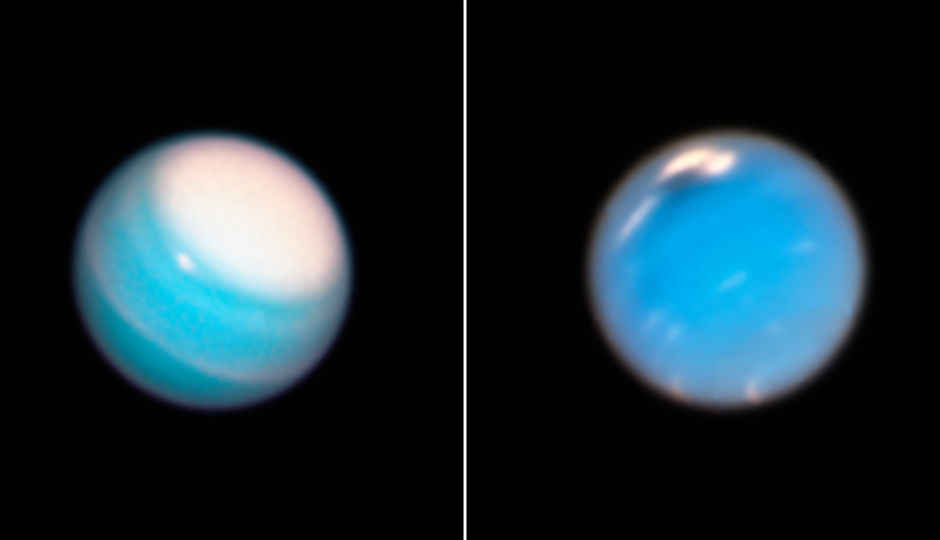NASA’s Hubble Space Telescope observes storms on Neptune and Uranus
The Hubble Space telescope has uncovered a new “mysterious dark storm” on Neptune while providing a new look at the “long-lived” storm around Uranus’ north pole.

The Hubble Space Telescope has pointed its gaze at some of the furthest planets in our solar system , Neptune and Uranus and monitored the weather conditions over there. According to NASA, the telescope has uncovered a new “mysterious dark storm” on Neptune while providing a new look at the “long-lived” storm around Uranus’ north pole.
 Survey
SurveyThe Hubble telescope shows a dark storm on Neptune that appears during the planet’s southern summer. NASA notes that this is the fourth “mysterious dark vortex” captured by Hubble since 1993. The storm is roughly 6800 miles across. A notable feature around the dark vortex are white “companion clouds” which are similar to clouds observed in previous vortices. The clouds are said to from when the flow of ambient air is perturbed and diverted upwards over the dark vortex, thereby causing the gasses to freeze into methane ice crystals. “It's unclear how these storms form. But like Jupiter's Great Red Spot, the dark vortices swirl in an anti-cyclonic direction and seem to dredge up material from deeper levels in the ice giant's atmosphere,” NASA noted on its website.
Similarly, Uranus also features a dominant storm cloud around its north pole. Scientists note that this feature is a result of Uranus’ unique rotation. The planet is tipped to its side and during the planet’s summer, the sun shines almost directly onto the north pole and never sets. NASA scientists also note that near the edge of the storm is a methane-ice cloud.
It should be noted that both planets are classified as ice giant planets and have no solid surface. As such, it has “mantles of hydrogen and helium surrounding a water-rich interior, itself perhaps wrapped around a rocky core. Atmospheric methane absorbs red light but allows blue-green light to be scattered back into space, giving each planet a cyan hue.”
Scientists hope that analysing the weather on these planets will help them understand the diversity and similarities of the other planets, including that of Earth.
Digit NewsDesk
Digit News Desk writes news stories across a range of topics. Getting you news updates on the latest in the world of tech. View Full Profile